 
BOWLES SECOND GENERATION
'HORIZONTAL BRACE' FRONT LOADERS
Introduced around 1972, the second generation front loaders got an all-new body with a very basic bracing scheme. Two box-like horizontal supports ran the length of the body, bisected by similar vertical supports at the rear and center of the body. The clean new design housed a variety of internal components; push type packers with twin vertical cylinders (partial or full packing), push type packers with horizontal cross-mounted cylinders, and even the tried-and-true pull-back packer that first debuted back in 1957.
During the early 1970s, Vince Bowles had talked with the owner of Heil about creating a partnership to produce a front loader, a product Heil didn't have at the time. Although Heil had already been selling Bowles transfer station equipment, the Bowles-Heil front loader was never built. Heil eventually went with their own conventional type design, so a partnership between Bowles and Union Environmental of Livonia, Michigan was created instead. In 1973, the first Union-Bowles front loaders appeared, which in later years were simply badged as Union. Because Union was unable to manufacture the bodies to Vince's standards, the partnership was dissolved after only two or three years.
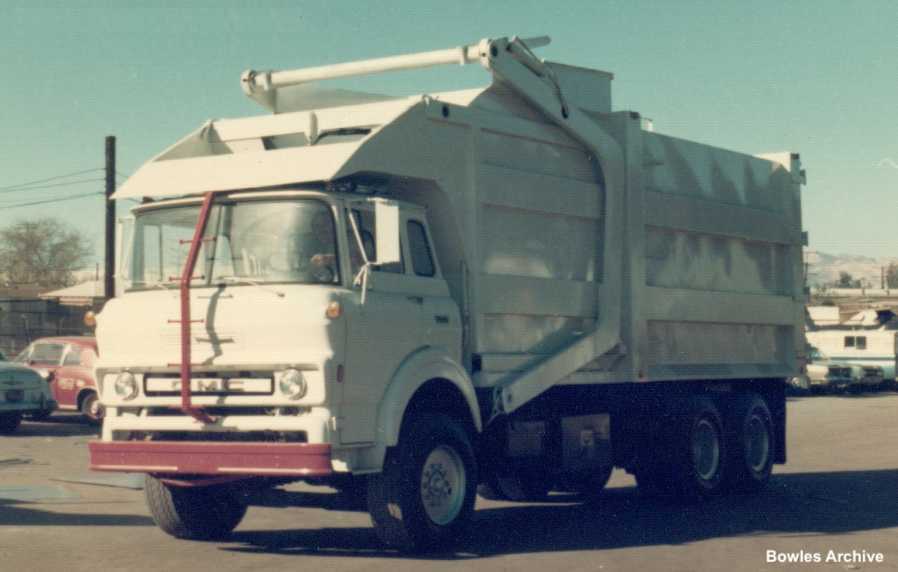
This early example has a push-type partial packer with vertically stacked cylinders and a fully enclosed front. The OTC lift arms (with side forks) are actuated by the traditional under-body cylinders, and the back end was sealed by a pair of barn doors.
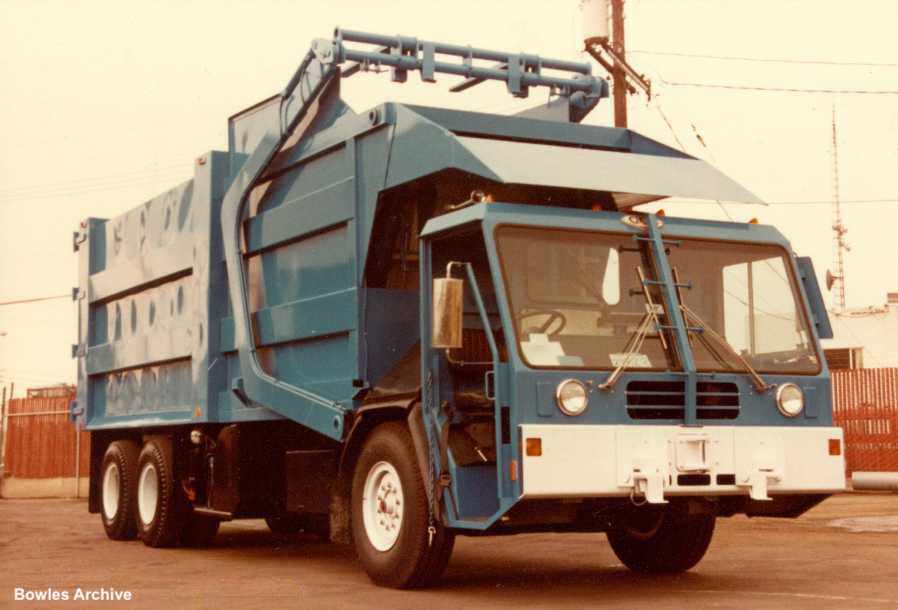
Judging by the color, this push packer on a CCC Centurion LET (Low Entry Tilt) was probably destined for BFI
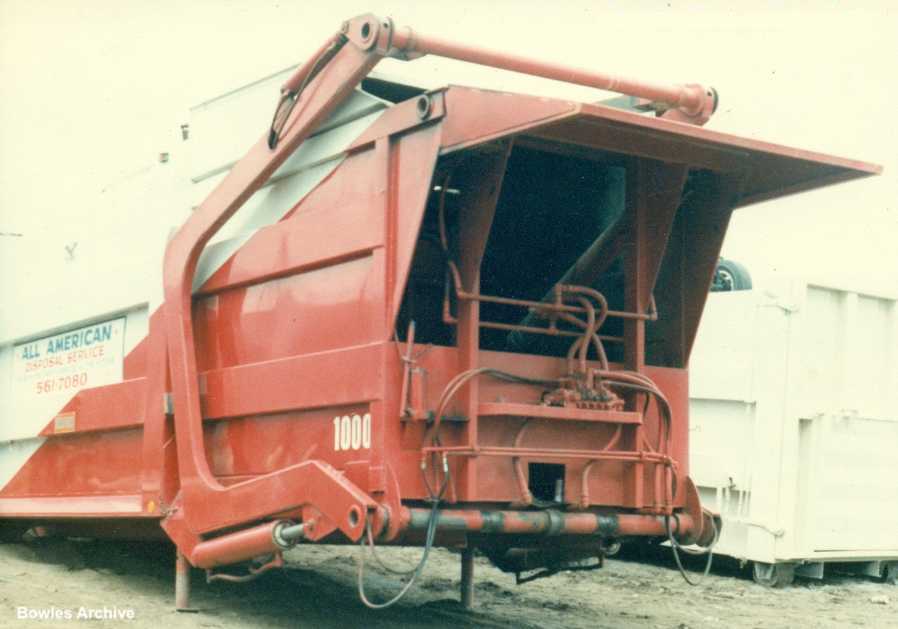
This un-mounted body offers an unobstructed view of the push-type packer's long, single stage cylinders. Full pack models were similar, but used multiple-stage telescopic rams instead.
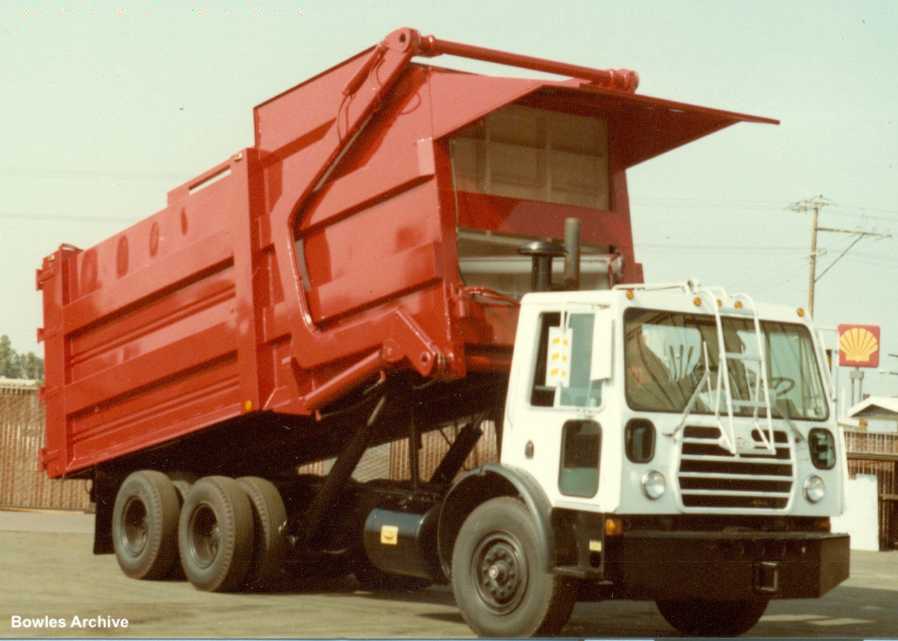
This CCC Centurion tips its body, giving a look at the "cross-ram" push packer. The single stage cylinders are stagger-mounted (one slightly above the other), each pushing on the opposite side of the blade.
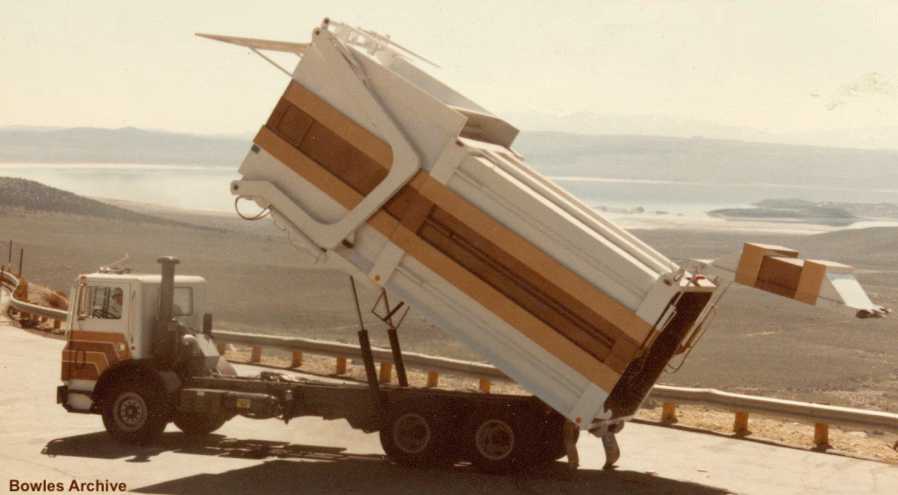
This body has a bubble tailgate, operated by twin side mounted cylinders.
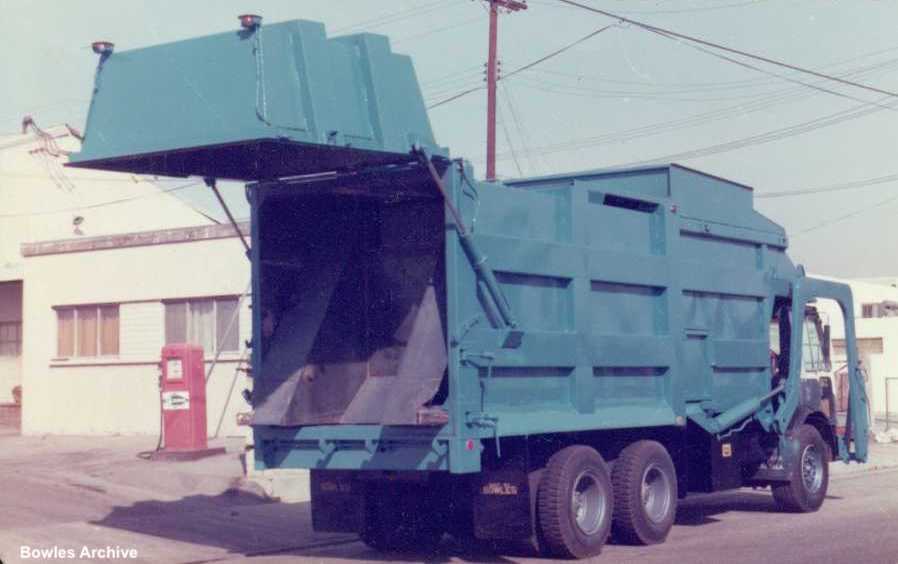
A big full-pack, with bubble tailgate open, revealing the packer blade. Note the extra vertical brace on the body, midway between the hopper and the tailgate. This was probably added because of the higher packing pressures.
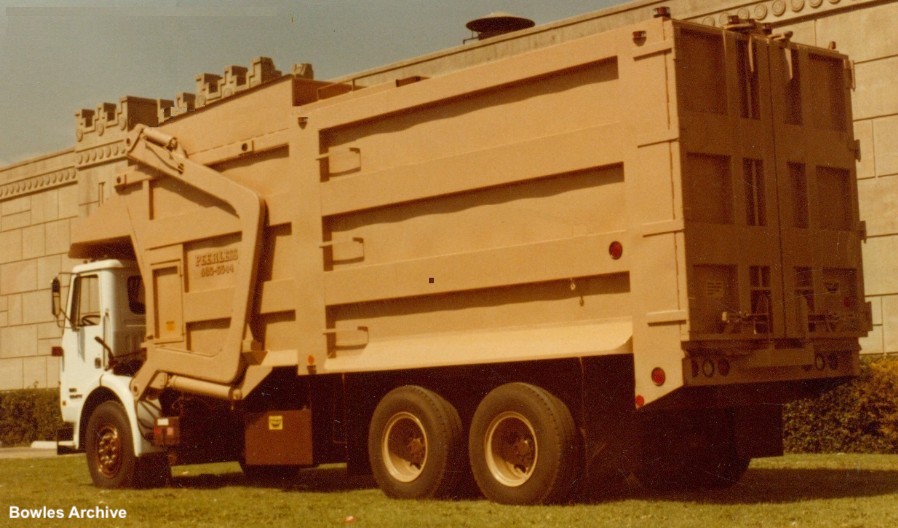
Peerless White Xpeditor 2 with special heavy duty Bowles body (an additional brace along the top edge).
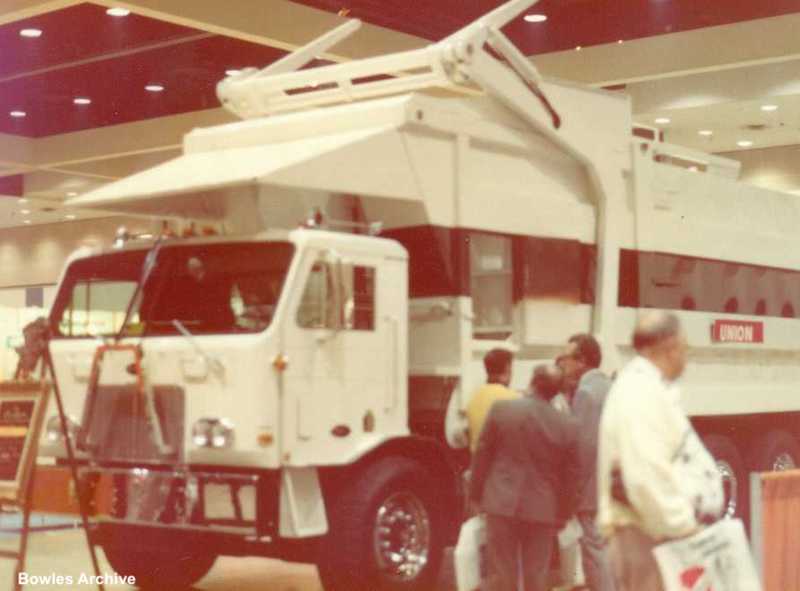
Union-Bowles on a 310 Pete at a trade show
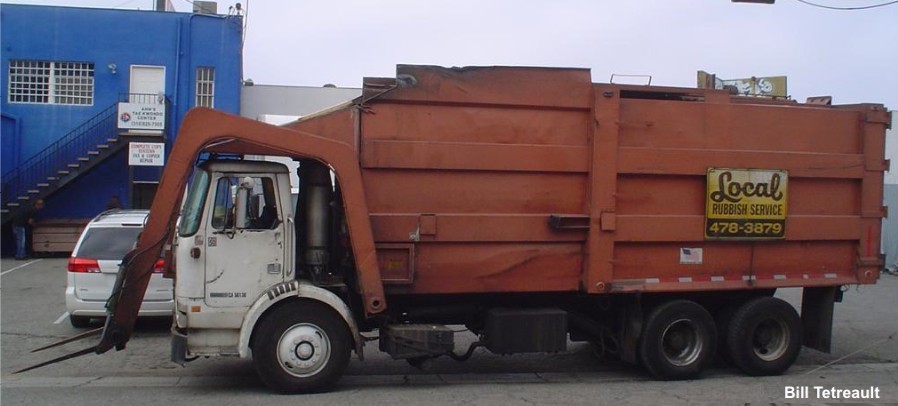
Pull-back packers are difficult to spot without actually looking inside. Unlike the earlier models, there are no visible roller tracks or hoses coming through the sides of the body. Some models, like this pull-type owned by Local Rubbish, have what appears to be a roller bearing service door in lower front brace.
|
From 1978 to 1984, Dempster sold Bowles equipment under their own name, and in 1979 (while Dempster was employee-owned), a Mr. Paul Troutman was flying to Los Angeles to work out a deal with Vince whereby Dempster would buy out Bowles. Tragically, Troutman lost his life when American Airlines Flight 191 crashed during take-off from Chicago O'Hare International Airport, killing all 271 passengers and crew members. Later, under the corporate umbrella of Technology Incorporated, Dempster would purchase micro-builder C & O Manufacturing of Santa Fe Springs, California.
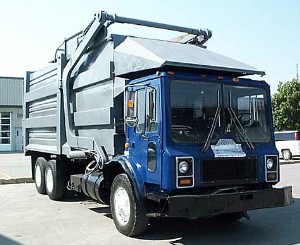 In 1984, Bowles was visited by Claude Boivin, owner of Quebec-based Labrie Equipment Ltd.Boivin was looking to manufacture a front loader in Canada, and bought the rights to build the Bowles horizontal-brace design.
In 1984, Bowles was visited by Claude Boivin, owner of Quebec-based Labrie Equipment Ltd.Boivin was looking to manufacture a front loader in Canada, and bought the rights to build the Bowles horizontal-brace design.
Labrie produced the front loader for a number of years, which was sold under their own name. The example shown here is virtually identical to the Bowles model on which it was based.
|



1/17/10
© 2010
All Rights Reserved
Logos shown are the trademarks of respective manufacturers
Photos from factory brochures/trade advertisements except as noted
|
| |